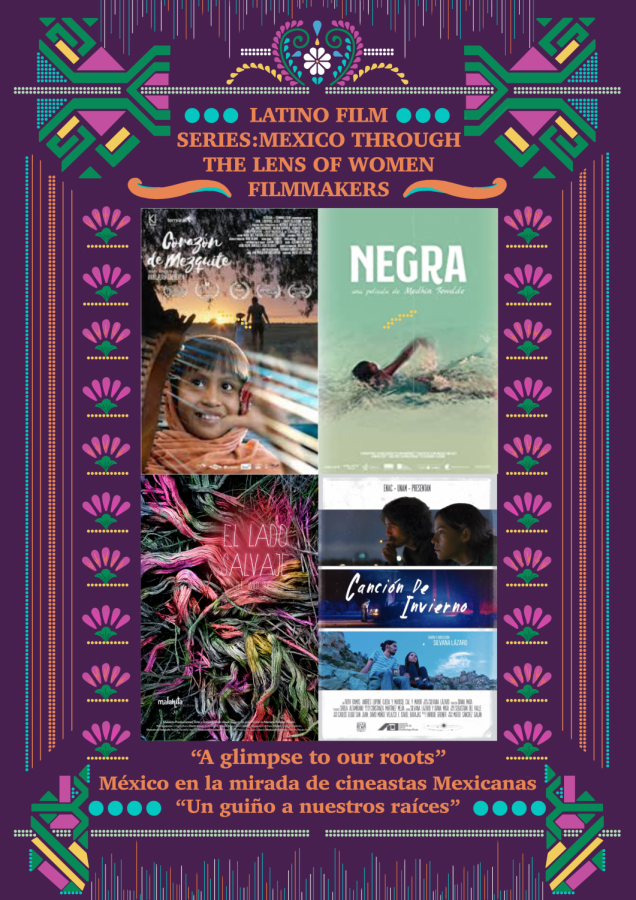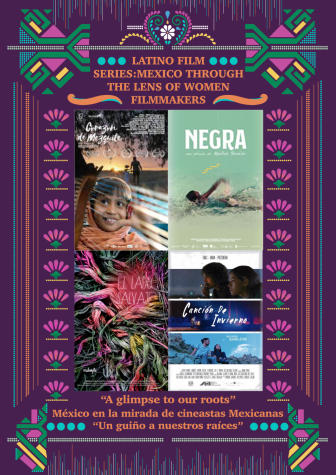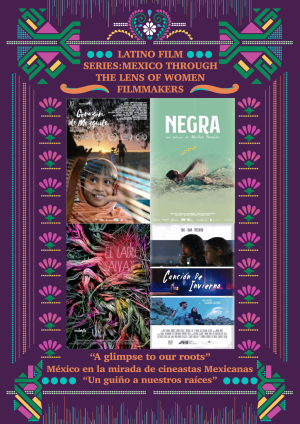Latino Media Arts and Studies presents film series by Mexican woman filmmakers to share culture, create belonging
February 28, 2023
With her hands in the air, Lucía plucks an invisible harp’s strings in her sleep, dreaming of playing the instrument in the film, “Corazón de Mezquite.” However, within her Indigenous Yoreme community of northern Mexico, only men traditionally play the harp.
“It’s not just in movies; it’s in so many facets of life,” said Mirasol Enríquez, director of the Latino Media Arts and Studies Program. “Women being excluded, being told that they can’t or shouldn’t, or are not allowed or not supposed to … whether it’s making films or playing the harp.”
In collaboration with Cine Las Americas and Malakita Productions, the Latino Media Arts and Studies Program showcased “Corazón de Mezquite,” directed by Ana Laura Calderón Montiel, on Feb. 21 as part of a spring film series “Mexico Through the Lens of Women Filmmakers.” Continuing through April 4, the series highlights films directed by Mexican woman filmmakers every other week, including “El Lado Salvaje,” “Negra” and “Canción de Invierno.”
Working at Malakita Productions, a cross-discipline agency promoting Mexican cultural projects, Mayte Paredes said the series aims to amplify the work and experiences of Latina women, who continue to be underrepresented in the American and Mexican film industries. Enríquez said it can also be difficult to see Latinx and Indigenous films in general, leading her to bring the film series to UT.
Andres Renteria, who attended the first screening, said he skipped class to see “Corazón de Mezquite” with his friend Abraham Vidal.
“I don’t think, in Austin, that Latinos are very well-represented in the media,” said Renteria, a radio-television-film freshman. “Even in classes, I don’t feel like whenever we screen things … that teachers do a great job at representing Latinos, who are most of the time a large plurality in the classroom.”
Vidal said he wants to support Latinx filmmakers and see how their stories get told on the big screen.
“I love the characters (in ‘Corazón de Mezquite’),” said Vidal, a radio-television-film freshman. “I’ve seen them personally. It reminds me of a lot of people I know, so it was really emotional for me.”
Paredes said the strong Latinx community at UT creates an ideal audience for the film series.
“These movies can bring the audience a sense of belonging,” Paredes said. “It was our goal to make a reflection on our identity and give a glimpse of our roots.”
Enríquez said she hopes the film series bolsters community and raises awareness about Mexican women filmmakers, inspiring young women to play a part in creating change within the industry.
“We think that it’s our duty, it’s our responsibility, to start saying that women are really strong in film, and the media need to open their eyes to all these very talented artists and works,” Paredes said.
Showcasing “El Lado Salvaje,” which translates to “The Wild Side,” on March 7, this next screening will include a Q&A and reception with the filmmakers after the film. Enríquez said she wanted to create a space on campus that provides access to films created by Latinx and Indigenous people about their experiences.
“When it comes to Latinx and Indigenous film, it takes extra effort to go find those films, but it’s so worth it,” Enríquez said.





